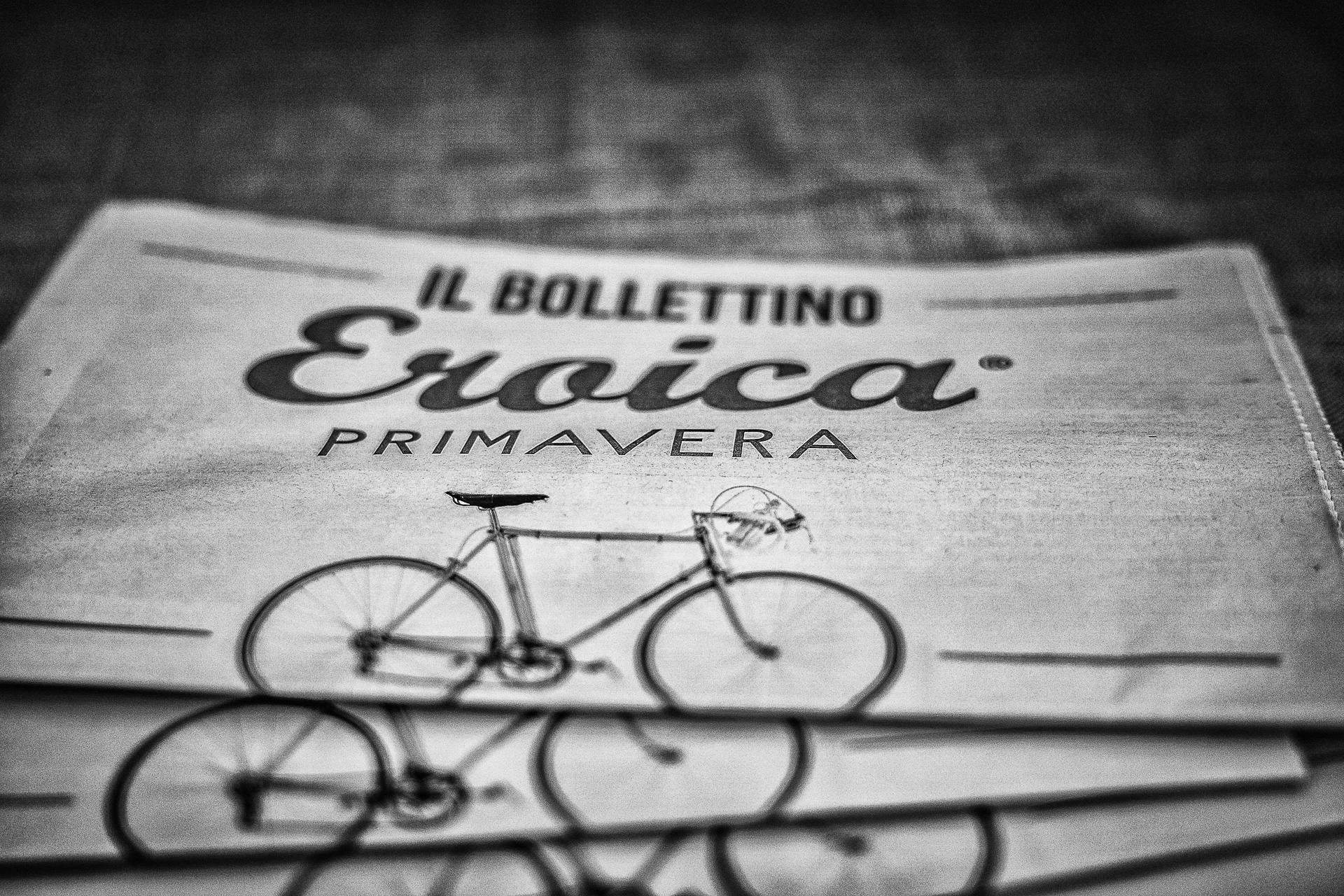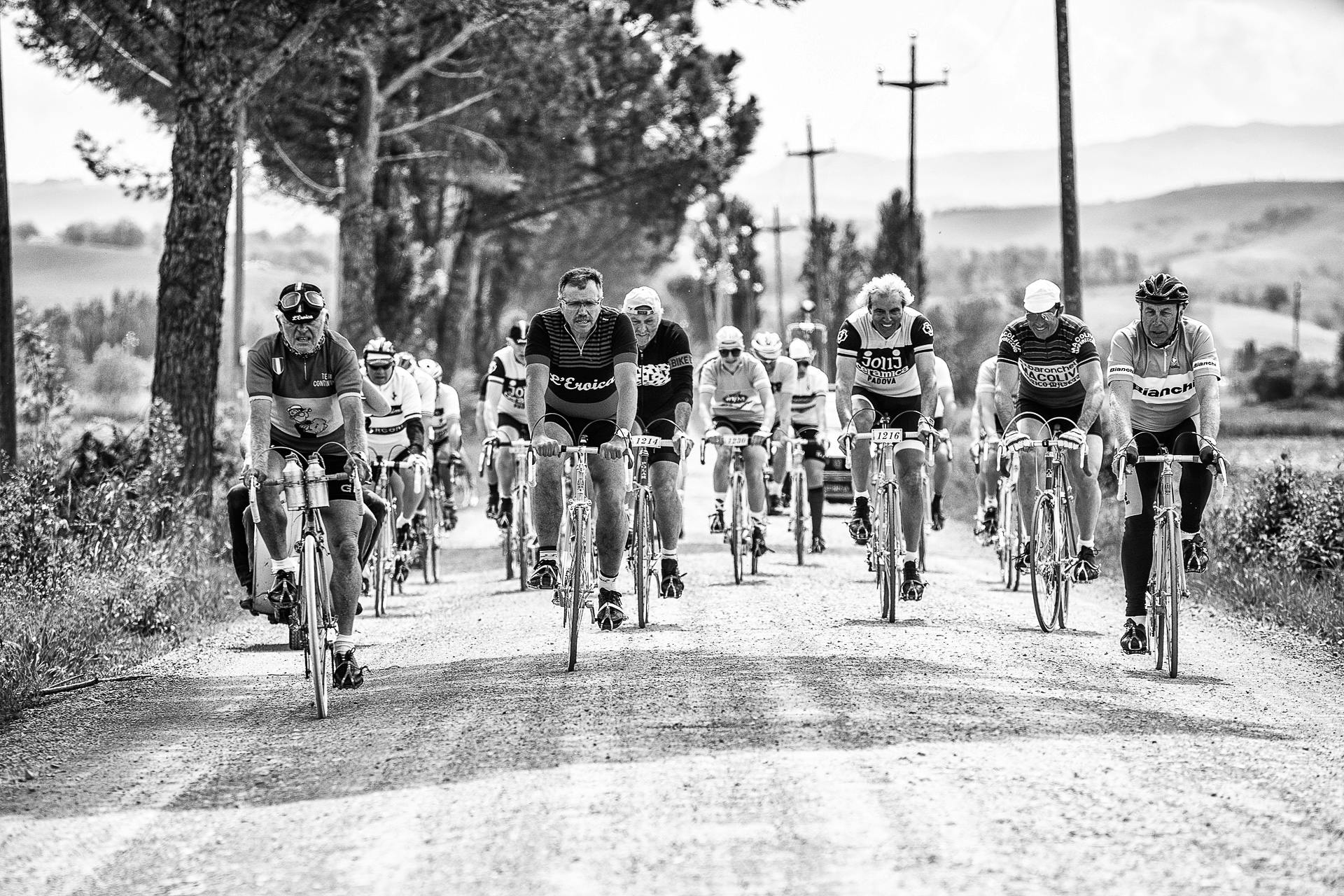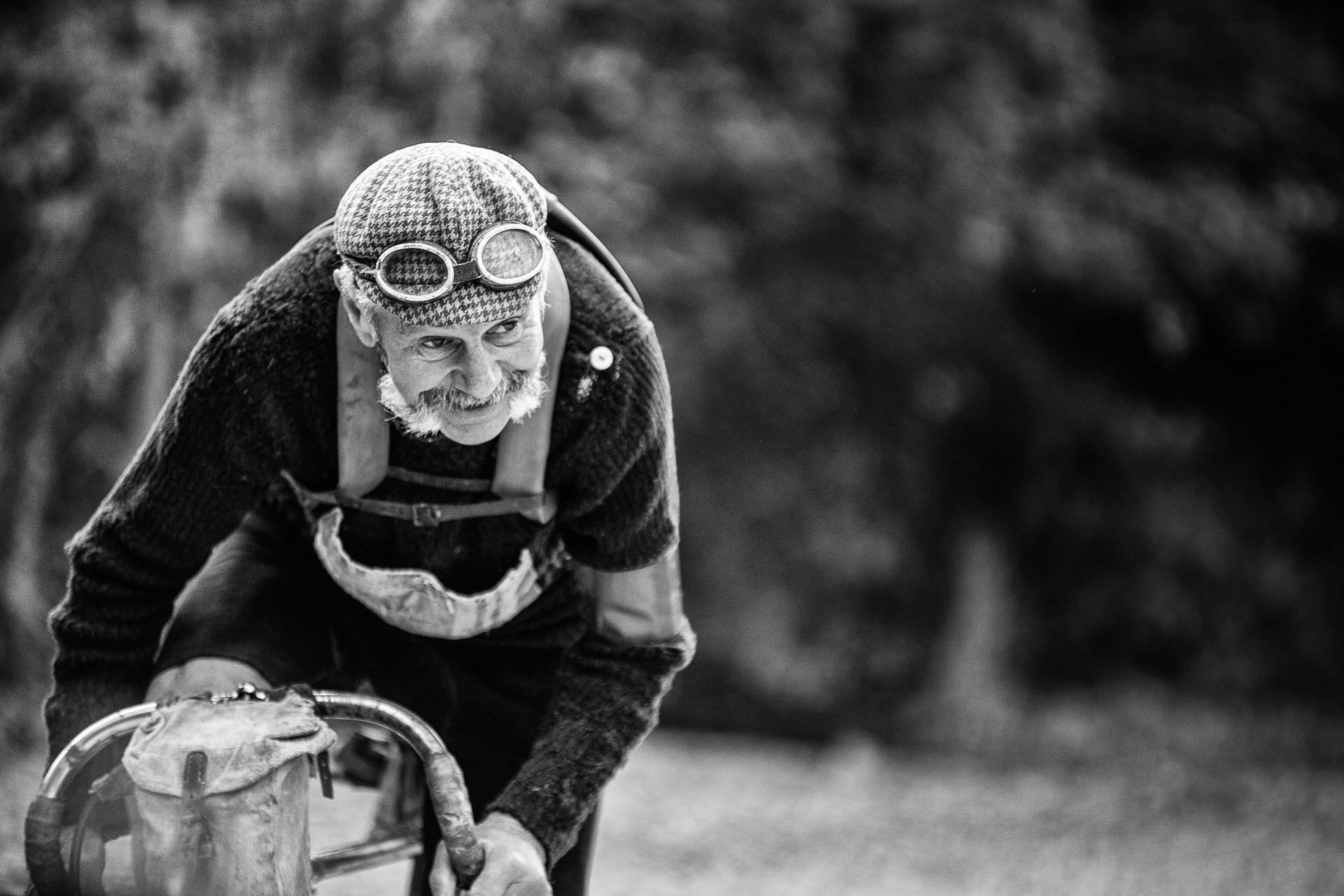Eroica Primavera
They say that the rivalry between Gino Bartali and Fausto Coppi was seen as a metaphor for the political and social division in post-war Italy. The cyclists were the legends of the time. A rivalry and a friendship that set a fire in the heart of Italians, even today, some 60 years later.

Text: Sarah Murphy
Photos: Marco Rimondi
“Bartali and Coppi were protagonists of the sporting duel of the last century in Italy. Their duel was front-page news in all the newspapers. They inspired a nation that was on its knees after the war and gave hope to the ordinary people.”
A nod to days gone by, and the era of Bartali and Coppi, L’Eroica is an annual Italian cycling festival and a brand of cycling unlike any other today.
The brainchild of Giancarlo Brocci, a local from Chianti, the non-competitive L’Eroica is shifting cycling’s future away from the ‘stage production’ that is professional cycling in the 21st Century.
“Cyclists who ride L’Eroica want to experience the cycling of bygone days, but they believe that the values of that era can be applied to the new generations.”
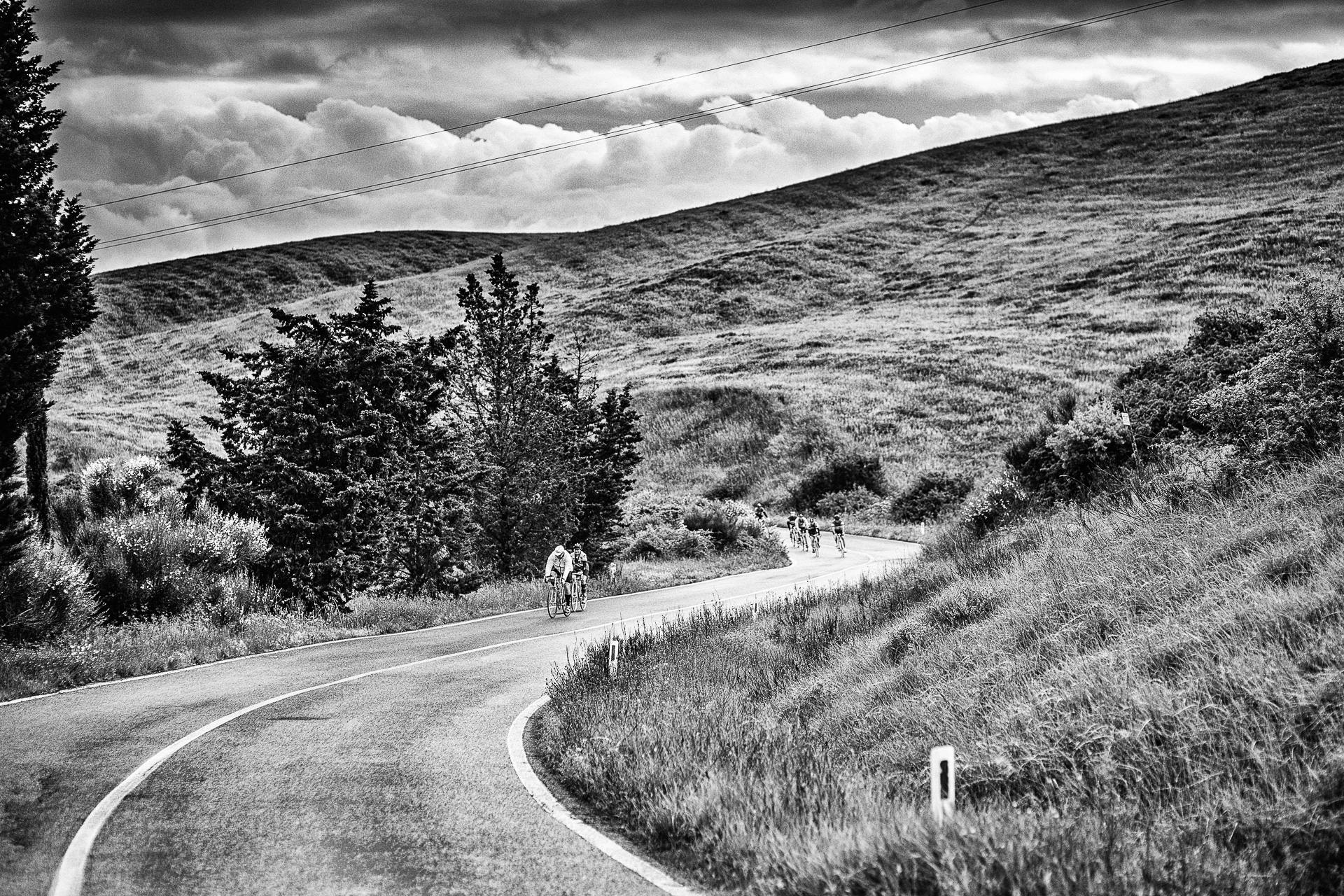
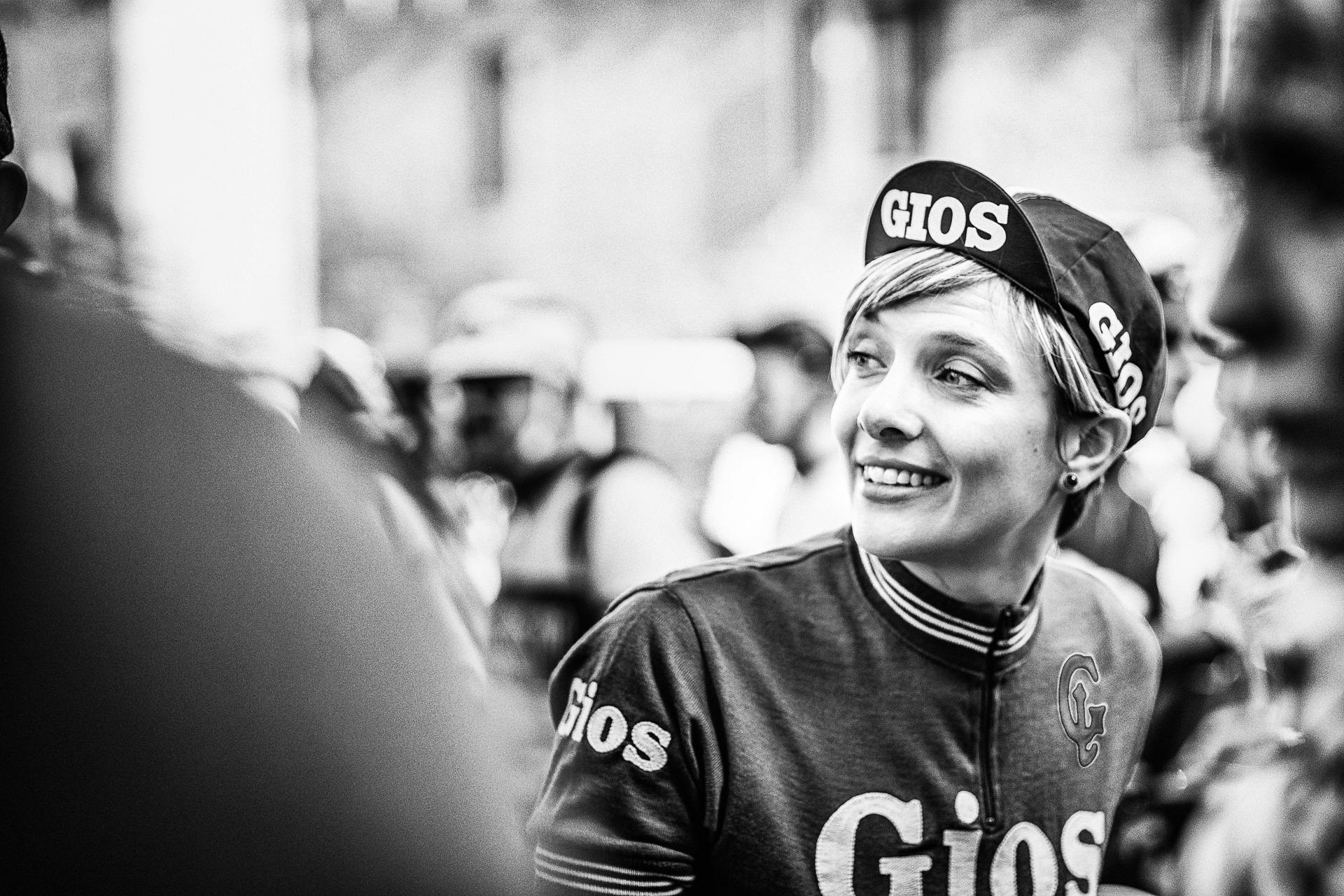
L’Eroica - which translates to The Heroic in english - is an ode to the men who “restored dignity to Italy.”
“For this alone they deserve to be placed among the fathers of the republic”. At the very least, Brocci considers them among the fathers of L’Eroica. With four routes that take cyclists through the rolling meadows of Tuscany on the iconic strade bianche (white roads), L’Eroica is much more than a feast for the eyes.
The ‘long route’ and “erioca” at its most authentic, is now a permanent route and open year round. Cyclists start in Gaiole in Chianti and cycle 209km, discovering the vineyards, rolling meadows, olive groves and woods that have inspired some of Italy’s great literature and art.

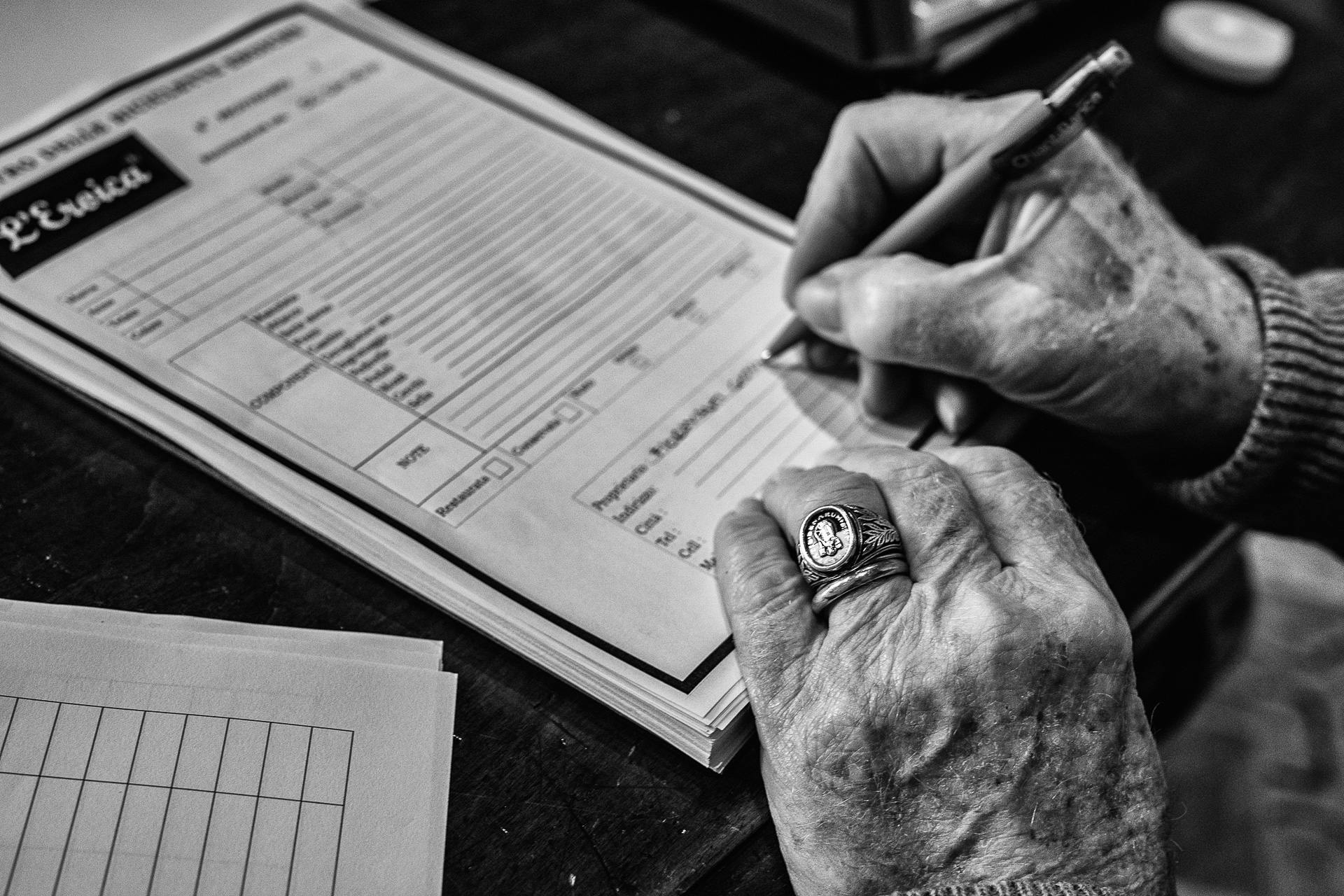
Eroica Primavera, which in 2016 took place on May 1st, is the little sister of the original L’Eroica and covers a large part of the long (209 km) route of the original event, in the area south of Siena. “Because the long route is accessible only to very fit riders, the organisers wanted to create an event to make this route available to many more cycling enthusiasts.” The steep hills make it a tough cycle but I am assured that it is beautiful, and of that, I have no doubt.
With it’s roots firmly in Italy, in the past few years, L’Eroica has expanded and has satellite events in other areas of the world - testament to a well considered ethos.
Together, the community is building the future of cycling, with remnants of the past. As the tyres hit the dusty roads, turning to white mud after a downpour, cyclists are treated to food stations along the way that provide them with decadence fit for heroes and a taste of Italy; red wine, fresh bread and salami.
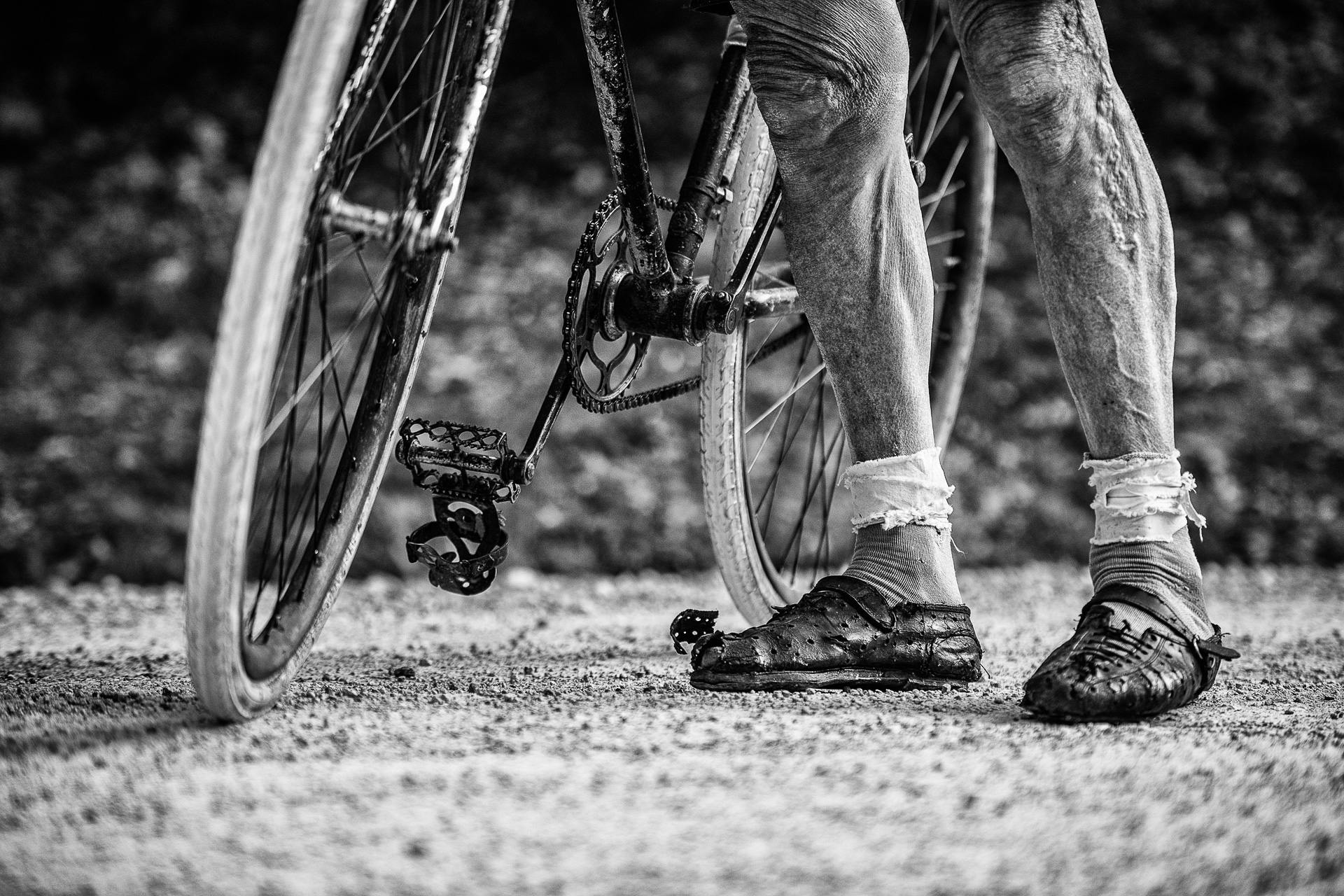
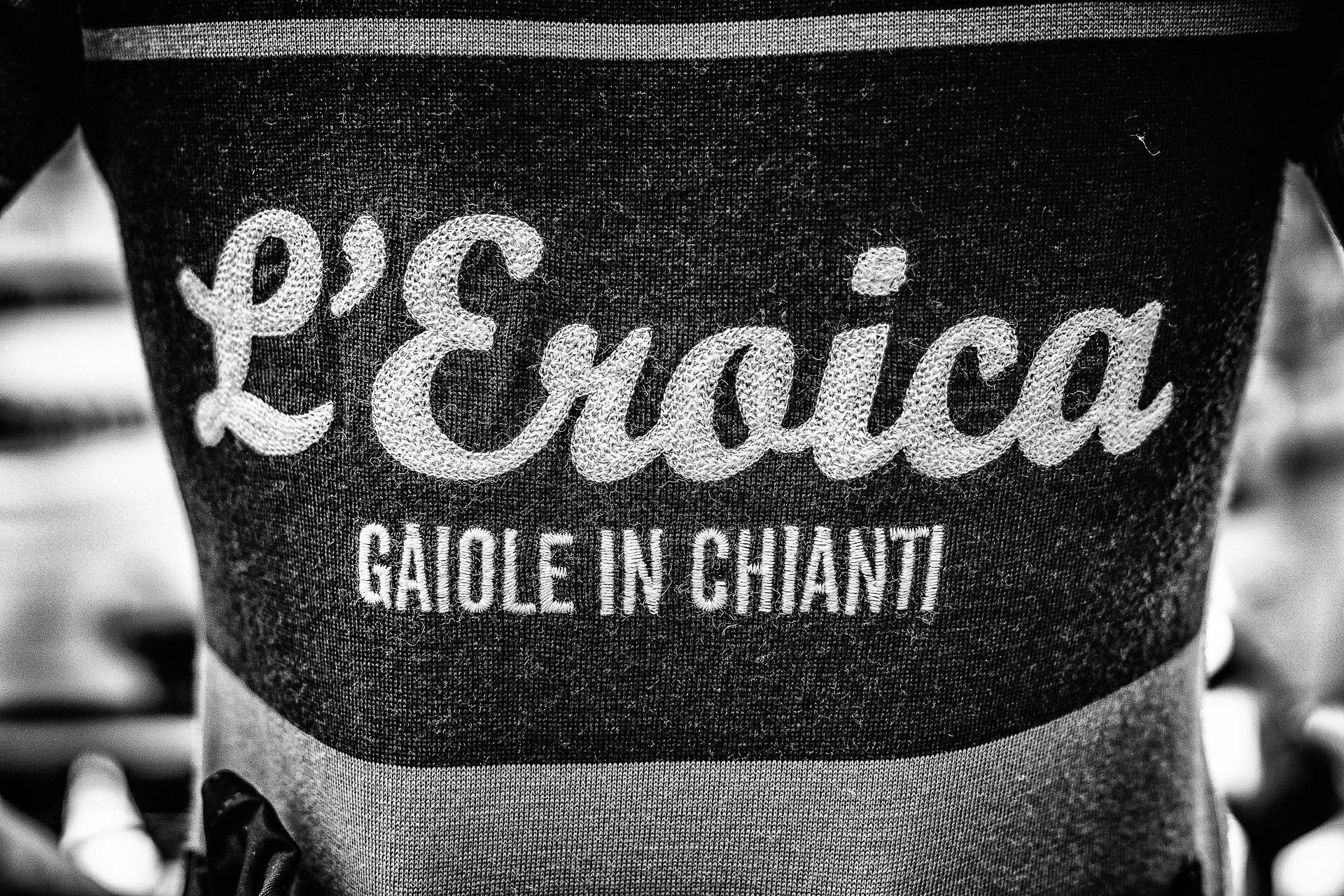
That passion extends to the iconic white roads on which the cyclists ride. One of the founding principles of L’Eroica was to ensure their preservation and to prevent them from being resurfaced. Proof of the festival’s success - they’re now under local government protection.
Strict regulations requires cyclists ride Bici Eroiche (historical bikes) - defined as road racing bikes built in or before 1987. Generally, these are steel framed bikes, shift levers - for bikes that have gears - must be on the down tube of the frame, unless you have pre-1980 non indexed bar-end gear shifters and rod/hand manual operated derailleurs. The gears must also have the original shifters. Clip-less pedals are not allowed and brake cables must pass outside and over the handlebars. These are the fundamental rules.
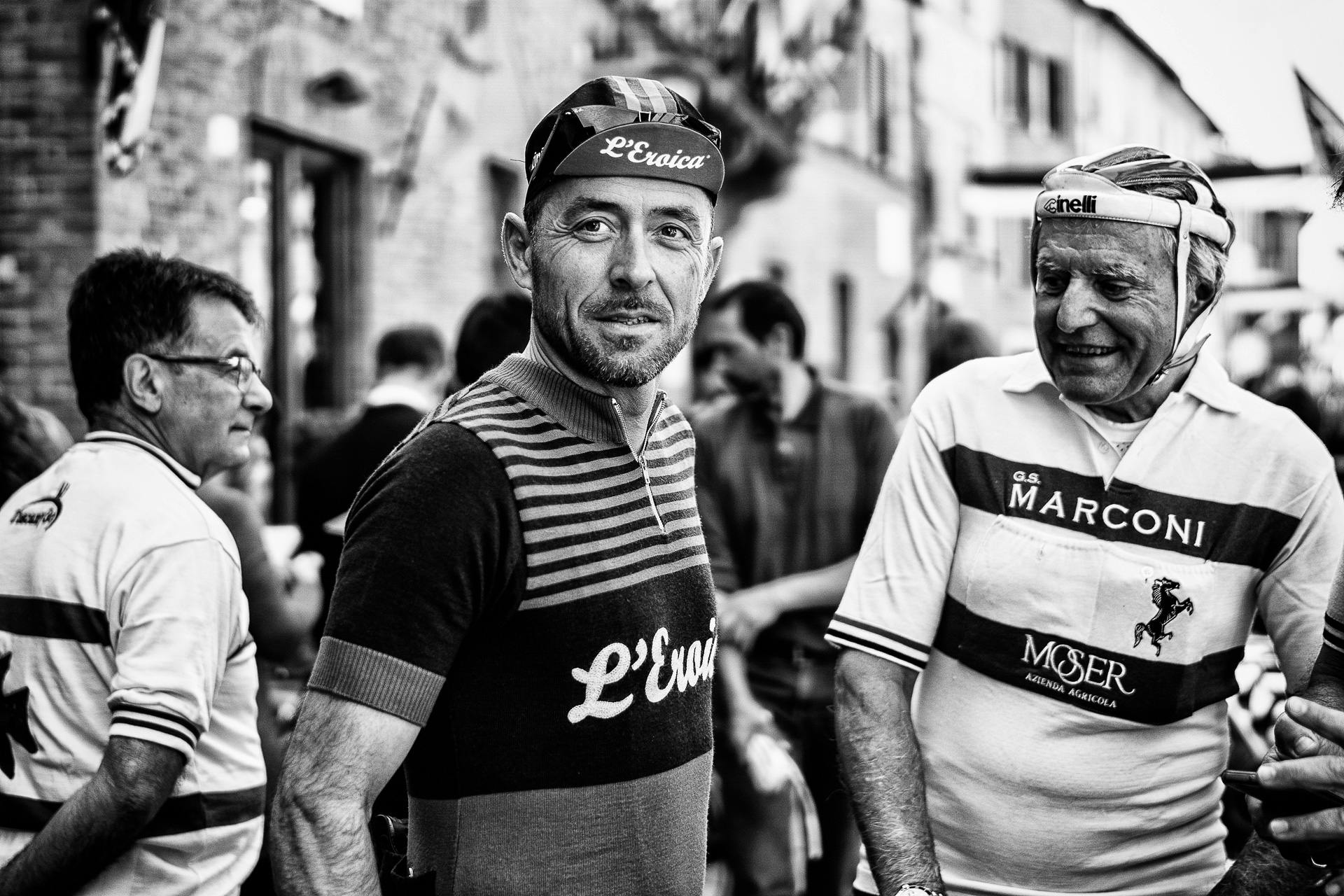

In short - the bikes are typically heavy and with little or no gears. People have cycled L’Eroica on bikes from the early 1900s - far from the modern machines perfected for the endurance feats of some of the world’s famous rides. The 209km ‘long route’ is no summer cruise. A challenge of the heroic.
The clothing is impeccable, but then again, would you expect any less from a country that is known for its fashion? Cyclists are dressed in vintage or vintage inspired gear - woollen jerseys and shorts in keeping with the vibe. The organisers take regulations very seriously and cyclists who break the rules risk disqualification. The only modern accessory allowed is a helmet, something encouraged for safety but those who wish to embody the golden days tend to forgo safety in the name of authenticity.
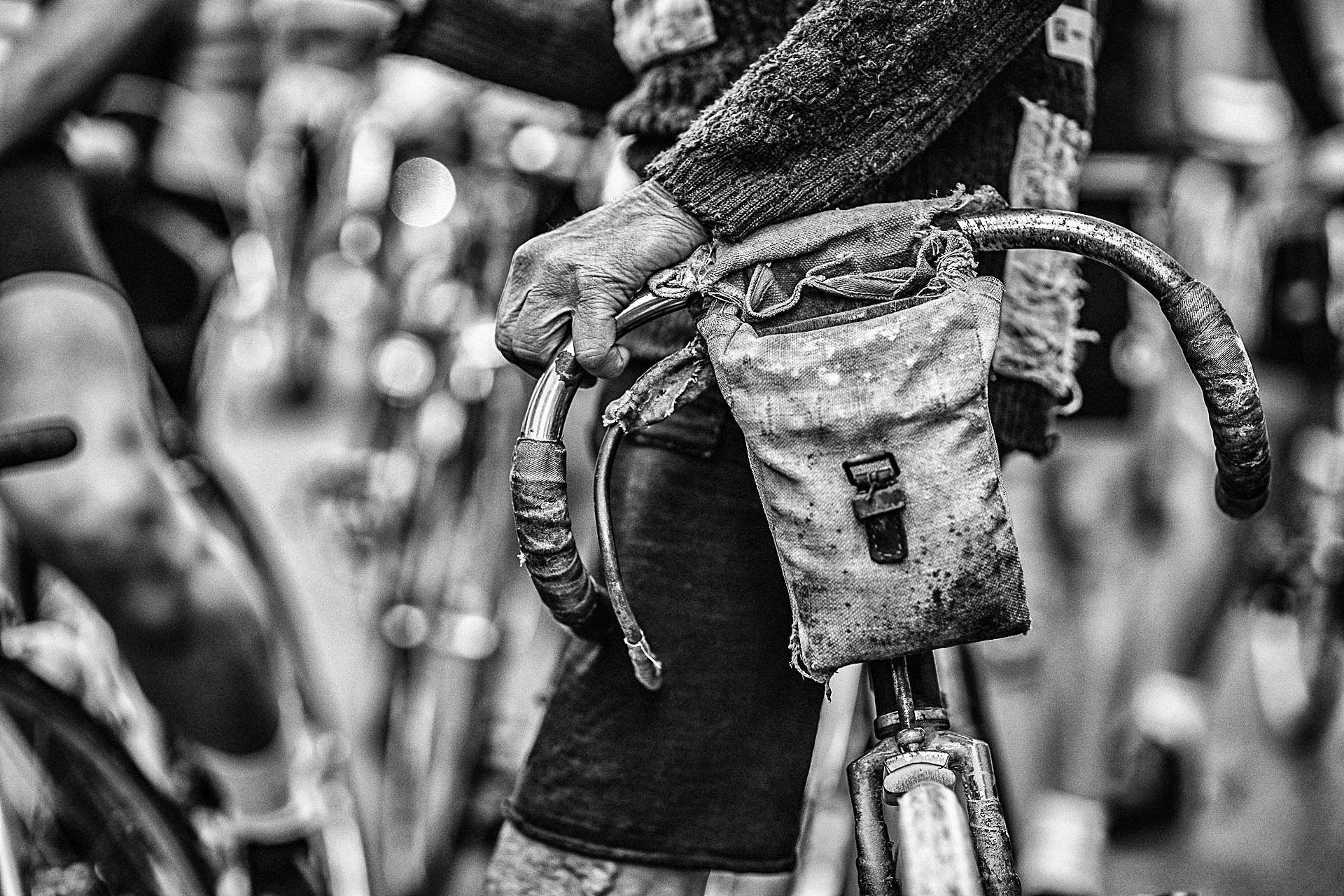
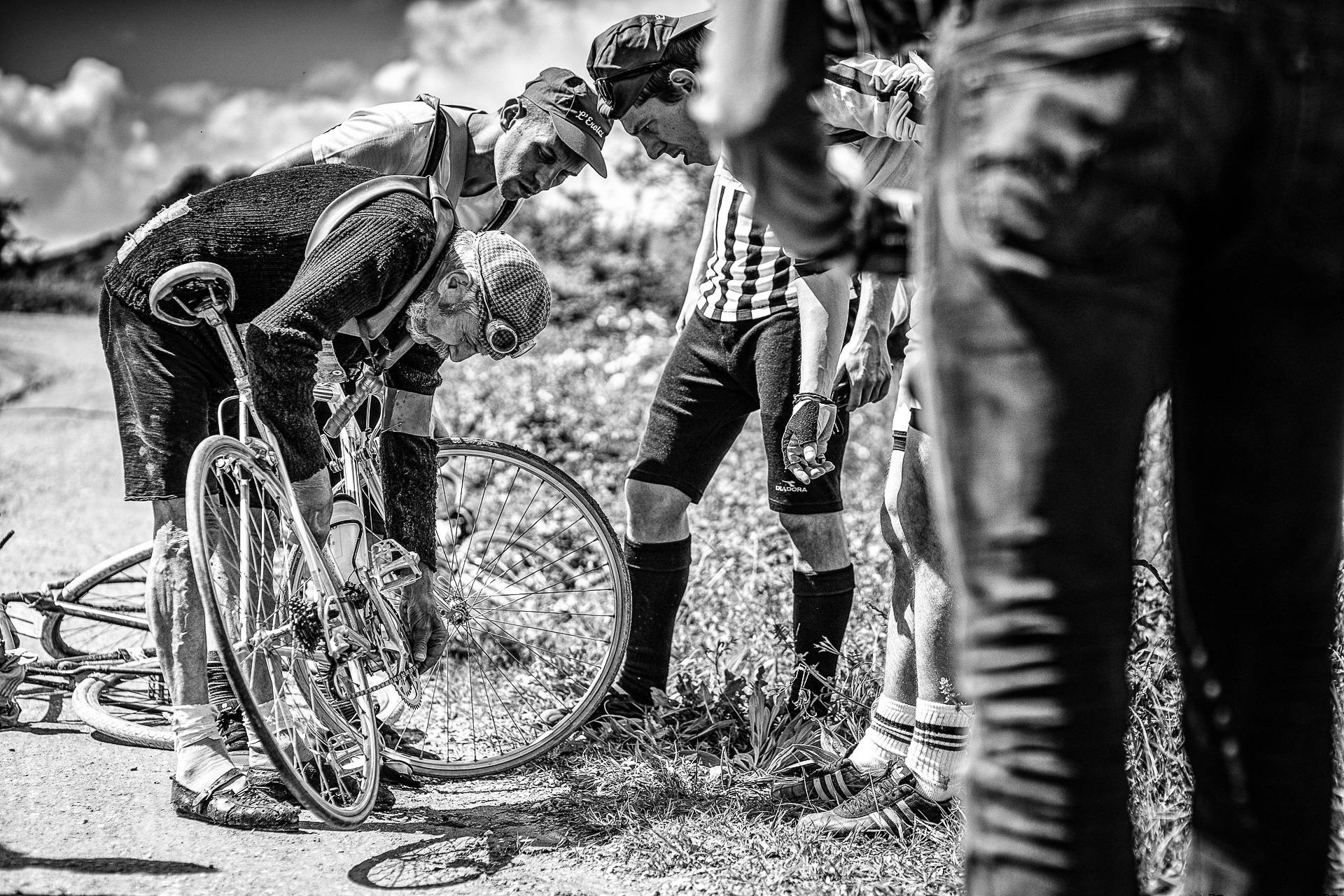
Authenticity is revered so much so that tracking down vintage cycling gear and bicycles has become a bit of a challenge in some parts of the world. If you were thinking of just jumping on to eBay and finding yourself a bargain, think again, prices have shot up in line with demand.
“Not only have garages and cellars all over Europe been emptied of their old bikes and accessories, but Bianchi and other manufacturers have started making vintage style bikes for the international market.”
This isn’t a fad, something that will see an influx in interest and then be gone as fast as it appeared, it is a revival of what once was considered to be an institution. Not an infatuation, but a passion- this year L’Eroica celebrates its 20th anniversary.
The cyclists are the “hunters of feelings and emotions” chasing the “beauty of fatigue and the thrill of the conquest”. Words from the Brocci himself - a living legend in his own right.

